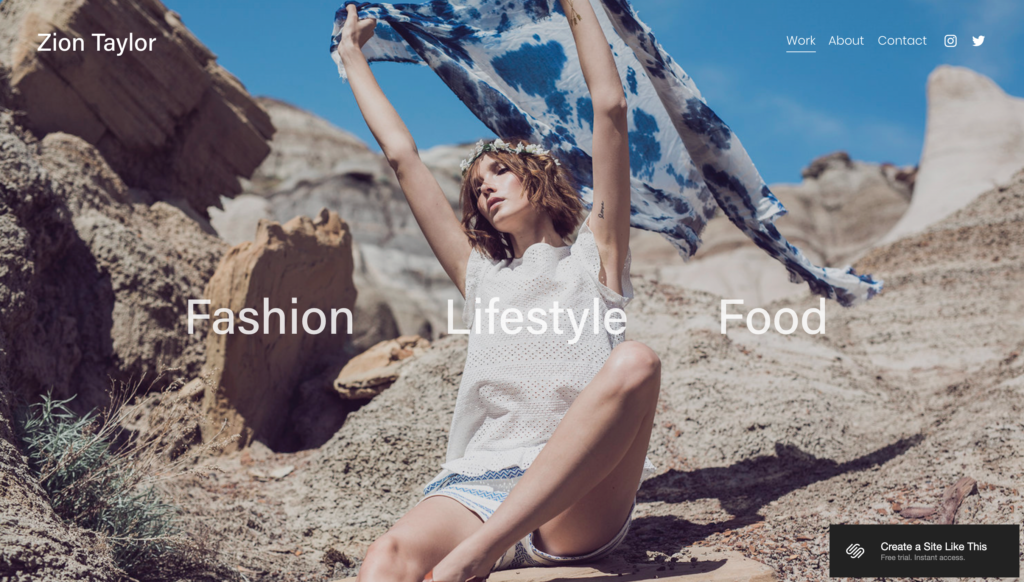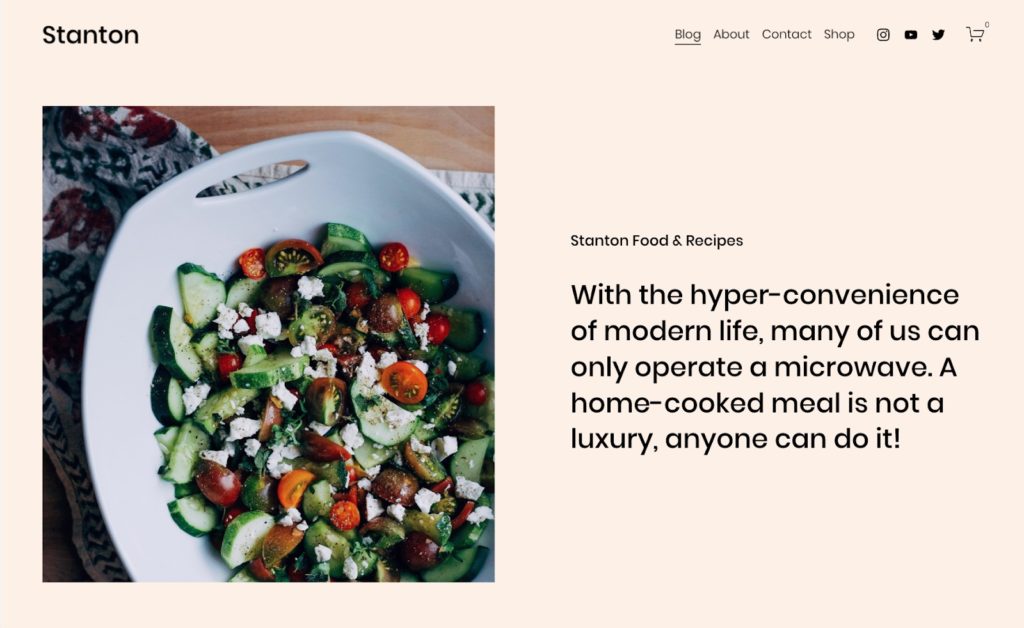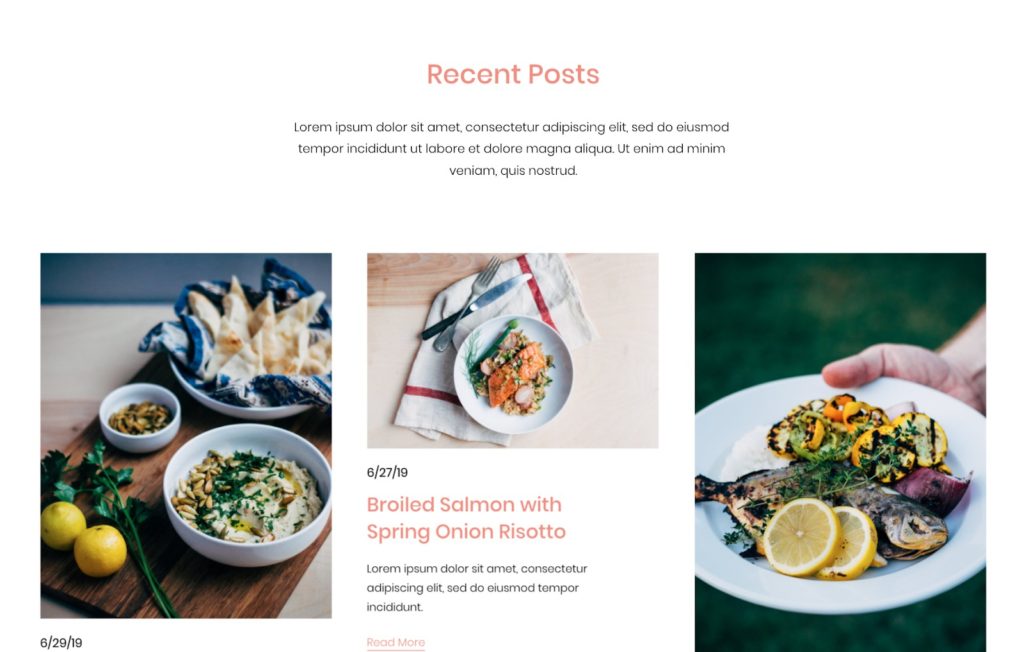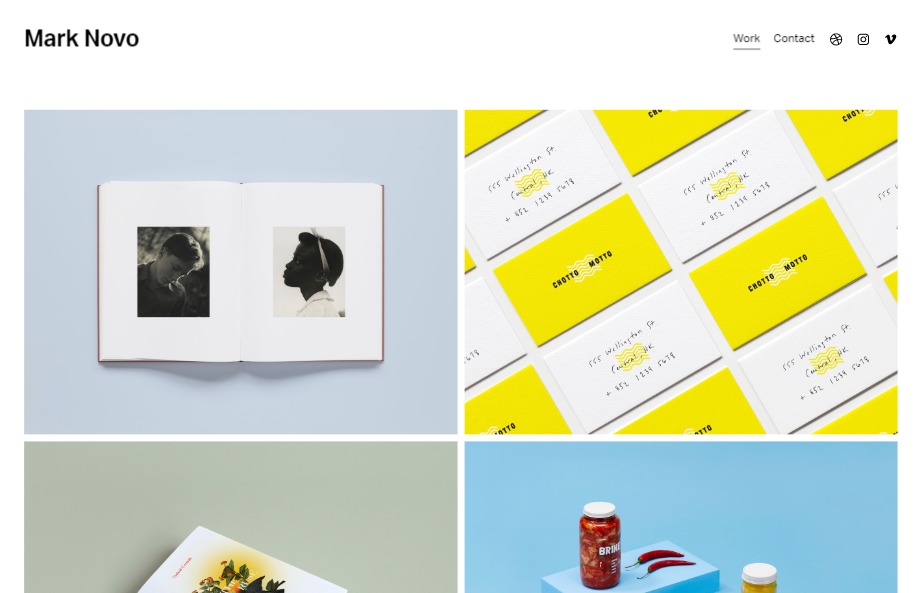The 5 Totally Digital Things I Did To Land The Clients I Wanted

This article is brought to you by Squarespace.
My freelance career started entirely by accident, after a chance conversation in my college writing center led to a two-year stint of steady work. I copyedited conference papers for a professor, which led to a referral to their colleague’s academic journal, which then dropped me into a long-term gig doing format editing for a textbook publisher.
I didn’t realize how lucky I was to have had such an easy entry into paid writing and editing. After graduating, I started a job at a small arts nonprofit, doing work I loved, but with a paycheck I didn’t love. So, like many people my age, I started looking for extra work. I thought jumping back into freelancing would be easy. But that summer, I sent more than 90 pitch emails, and had just a handful of pieces accepted: two on spec, and none that led to reliable, long-term clients.
On a whim, I responded to each rejected pitch and asked if someone might be willing to offer feedback. Surprisingly, many did. Not all of it was helpful, and not everyone was receptive to my request, but reaching back out was empowering: not only because of their advice, but because I had gotten a brief glimpse at the importance of personal connections and my own ability to form them, even virtually. I couldn’t count on chance run-ins to pilot my career forever — and I didn’t need to. I had an email address, an internet connection, and a lot of gall.
In the time since, being online has helped me land new clients, grow existing contracts, maintain a reliable client pool, and much more. Here are five totally-digital things I’ve done to continue growing my freelance career:
1. I didn’t go it alone.
One of the biggest mistakes I made when I first started freelancing was being afraid to ask for help. Somehow, the idea of cold-emailing a stranger was less frightening than the idea of joining a freelancer group, and saying “publish my writing!” felt more acceptable than “can you give me feedback on my writing?”
Silly, I know.
In the end, joining virtual media resource groups like Study Hall and following newsletters and feeds from accounts like @WritersofColor or @WhoPaysWriters has helped me set my rates, and has connected me to communities of freelancers across the world who can validate, critique, and contextualize my own experiences. I get advice on pitches, referrals to clients, tips for working with certain editors, even tax help: and as my own career has grown, I’ve been able to pass on the advice I wished I’d had when first starting out.
2. I centralized all my work samples.
After that first summer of rejections, I realized that having a portfolio wouldn’t just be helpful, but essential, particularly without personal connections in the industry: a way to prove myself as a professional, and to showcase my work to prospective clients and editors.
For any freelance writer or other freelancer, this is where Squarespace comes in. As a writer, it’s easy for a portfolio housed in a document to look dry, too text- or list-heavy. Whether you’re a writer, artist, or creator, Squarespace is an amazing option for freelancers looking to build a beautiful, engaging digital portfolio, regardless of their web design experience. You’ll find hundreds of beautifully designed, flexible templates, along with a step-by-step guide to help you narrow down your options to match your needs: easy-to-leverage SEO, social media integration, layers of privacy options, creative and customizable visuals.

And a portfolio isn’t just important for a new writer. During my first few years of freelancing, I built up experience by accepting almost any paid writing project that someone offered me. Now, if left as simply a list of links, my portfolio would appear at best a miscellany, and at worst, a gratuitous mess: a commercial here, a restaurant menu there, a grant report listed next to an ode to tomatoes. But with a portfolio site, I was able to showcase that kind of multi-genre work as a strength. (Be sure to check out our step-by-step guide to easily putting together a Squarespace portfolio from TFD co-founder Lauren!)


What I’ve loved about using Squarespace is being able to break down any work samples into easy-to-digest categories and to display images and videos in unique ways. They even give visual appeal to drier documents like grants or academic texts. With customizable navigation tabs and the ability to create detailed content categories, this has the added benefit of showing existing clients how they might be able to leverage your skills in other projects: e.g. even if they’ve just hired you to write copy for an ad, they should also think of you if they have scripting needs elsewhere, or are about to apply for a grant, or know someone looking for copyediting assistance.

3. I read more, and pitched less.
This might sound counterintuitive, but one of the best pieces of advice I ever got from a rejection letter was to pitch less frequently, and more specifically. These days, rather than cold-mailing my way through a random collection of potential clients, I try to read ten pieces a week, from at least four different places. This can be anything from a feature piece in an established media outlet to a project summary from an ad agency, a review in a literary mag to a brochure from a travel company.
Familiarizing myself with the pieces that an editor was drawn to, or reading more of a potential client’s work helps me better understand how to write a pitch that’ll be accepted: or sometimes, shows me that I might just be a bad fit for the client’s needs. With detailed information about your audience, it’s easier to craft pitches and proposals that get to the heart of their needs and interests.
4. I leveraged social media.
For a long time, I kept my freelance work and my social media entirely separate: a holdover from my full-time job, where it felt important to draw lines between the professional and the personal. But as my client roster has grown, I’ve found that social media can be an incredibly valuable tool. Many of my clients have their own social media accounts, and use those accounts to search for contributing writers or creators: for example, a past client of mine was a local restaurant owner who had seen me tagged by a food publication and DM-ed me for help with his website copy. Integrating social media accounts with my portfolio also allows me to cross-pollinate audiences that might not have thought of me as a potential resource or hire, and to showcase skills and work samples that don’t have a place on professional networking sites like LinkedIn.
And with the social media tools available on Squarespace, your social media can populate directly onto your website. You can also push new site content to your social accounts in real time, and link from your social media to specific elements on your site, such as new blog posts or products for sale.
5. I worked with what I had, and drafted what I didn’t.
When I first started sending out my portfolio, all of my work samples were academic. But once I had a portfolio site, rather than just a list of links, I was able to include a detailed project brief for each work sample: outlining my responsibilities, the skills that might translate, any particular software, style guides, or media tools you used during the process.
Additionally, when I only had a few samples of work available and was reaching out to new clients who might be skeptical of my qualifications, I would draft mockup samples to fit their needs: quick, 100- to 300-word snippets that showed I could handle a new project. At first, it felt counterintuitive to write new content just for the sake of having a specific work sample. But in reality, I’d already been submitting pieces on spec to build my portfolio. Creating new clips allowed me to give potential clients concrete proof that even if I was new to the work, my skills could flex to their needs (and some of those clips even went onto become full pieces!). Though my portfolio has built out over the years, these mockups are something I still do for editors that want to see samples in a specific voice or on a specific subject: a 250-word history of bolognese, sample brochure copy for a lorem ipsum corporation, and a personal love letter to libraries, to name a few.
That’s why it can be helpful to include a blogging stream in your portfolio, even if you don’t regularly maintain a blog in the traditional sense. With the ability to schedule, publish, and send posts, Squarespace’s blogging options make it easy to add short clips to your portfolio whenever you’d like, with the same beautiful design and integration.
*****
As a freelancer, it can be easy to feel like you’re shouting into the void. But one of the benefits of being ~*extremely online*~ is that digital spaces offer so many creative ways to make room to celebrate the personal, to offer and ask for help, to find connections and build community.
If you’re ready to get started building your own beautiful portfolio site, head to Squarespace.com for a free trial. With our offer code “FINANCIALDIET,” you can also save 10% off your first purchase of any website or domain.
Image via Unsplash
Like this story? Follow The Financial Diet on Facebook, Instagram, and Twitter for daily tips and inspiration, and sign up for our email newsletter here.




